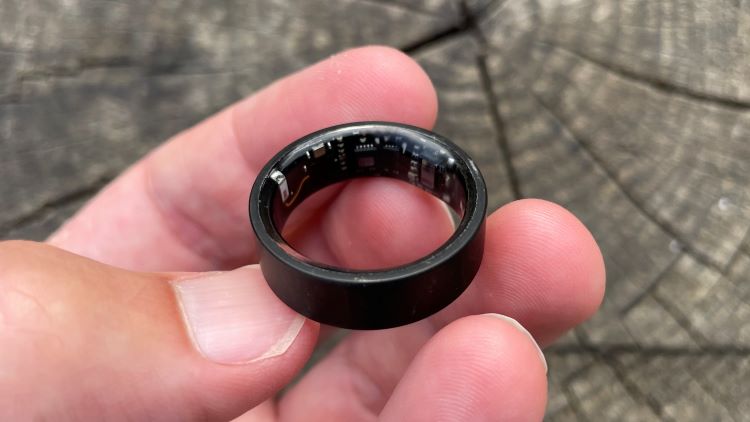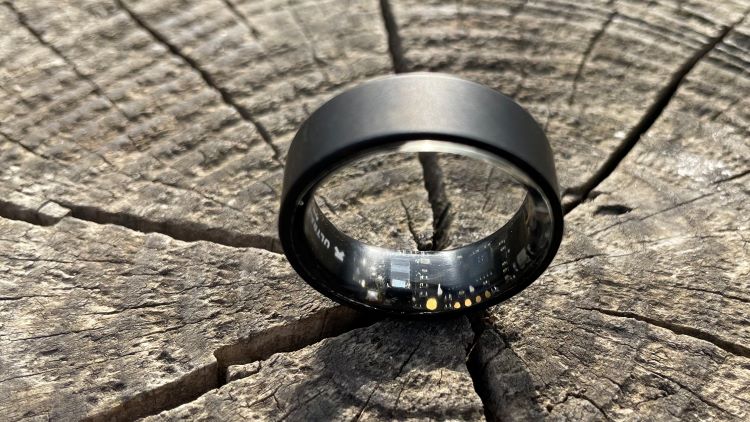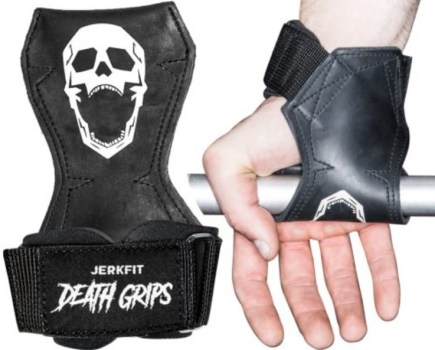Ultrahuman Air Smart Health Tracking Ring review: Is the Ultrahuman Air the one ring to rule your health? Here’s why we’re not so sure…
Ultrahuman Air Smart Health Tracking Ring
BUY IT NOW:
$349.99 / £280, ultrahuman.com
Pros:
- Huge range of metrics tracked
- Light and comfortable
- No subscription
Cons:
- Over-complicated advice
- Hit and miss accuracy
- Prone to scratches
Comfort: 4/5
Accuracy: 3/5
Tracking features: 3/5
OVERALL: 3/5
Health-tracking smart rings are still a relatively new thing in the fitness tech world. The popular 3rd gen Oura Ring set the benchmark for biometric bling but now the Ultrahuman Air is the latest wearable accessory to track your every move and improve your wellbeing.
Like the Oura, the sensor-packed Ultrahuman Air slips onto the digit of your choice and tracks a wide range of metrics and health-related vitals with a big focus on movement, sleep, recovery and your circadian clock. So does it get a ringing endorsement? I put it to the test to find out.
Ultrahuman Air sensors, tracking and accuracy
There’s an impressive array of biometric sensors crammed inside the Air ring, with everything to rival the Oura. It uses an Infrared Photoplethysmography (PPG) sensor and a load of red and green LEDs to track heart rate, heart rate variability and oxygen saturation. Meanwhile a non-contact medical-grade skin temperature sensor monitors body heat and six-axis motion sensors keep tabs on your every move, day and night.
With no screen, your data is fired via low-energy Bluetooth to the extremely detailed – and at times over-complicated app – where it’s converted into a series of charts, scores and daily recommendations.

The Ultrahuman Air Smart Health Tracking Ring is available in 11 sizes to help you find the ideal fit
When it comes to movement, the Ultrahuman Air rates your activity with a daily score out of 100. You also get a breakdown of your total active minutes and calorie burn.
There’s no auto workout detection but you can track sessions with 20 sport modes via a timeline that’s somewhat buried in the app. Alternatively, you can sync data from other devices.
If you forget to track a workout, the Air knows you’ve moved and adds that to your Movement score. But it won’t know what you did.
In my tests, tracked workouts sometimes ended without me telling them to. Ultrahuman confirmed that this is because there’s a deliberate 60-minute limit to workout tracking to save battery life. That’s not particularly useful, but it also said there’ll be a firmware update to remove that at some point.
Besides that, the Air struggled to accurately read heart rate. Long sections of my workouts had BPMs way below my chest strap, Garmin Enduro 2 optical sensor and my heart-rate arm strap.
It also occasionally under-tracked my movement. One day it suggested I’d only covered 20.5km when I’d run a half marathon by 11am, played football and walked another 4km at least. It’s also missing some of the big-hitting fitness metrics you’ll find on other rings and watches. There’s no breathing rate or VO2 Max, for example.
Ultrahuman Air sleep tracking
The automatic sleep tracking was no more reliable. The Air tries – but sadly often fails – to log nod off and wake times. It also struggles to register midnight toilet trips as wakeful interludes.
Each morning you get a sleep score along with a slew of other measurements, including total sleep duration, sleep efficiency and restfulness. In my tests, the sleep tracking frequently started late and often stopped tracking hours short of when I actually woke up. Unfortunately, this skews the other recovery recommendations and insights because your sleep data contributes to these.
I did like the Air’s attempts to detect naps. Most watches don’t bother with this. However, it regularly thought I was sneaking 40 winks at midday while sat working at my desk.
If you’re looking for a tool that helps you identify when your recovery is on point, the Ultrahuman Air attempts to quantify your body’s response to training and life’s daily stress and struggles. It offers daily recommendations based on a blend of Heart Rate Variability (HRV), heart rate, temperature and sleep, so you know when to push and when to rest.
Unfortunately, I regularly had large gaps in my overnight heart rate and HRV readings. One night my HRV was clocked as zero. And when you compare the recovery scores against the reliable HRV4Training app, the Air didn’t always track the same recovery trend. It also regularly failed to match how I felt that day.
Beyond this, the Ultrahuman app seems more than a little obsessed with your circadian rhythm. It’ll tell you when you should and shouldn’t have certain stimulants to avoid negative effects on your sleep and also when you should consider getting sunlight exposure.
This all seems intent on shifting your body clock to an earlier rhythm but it’s not clear why. I already get up at 7am and go to bed at 10pm pretty religiously. So why I’d want to shift my wake times earlier seems unclear and the whole thing feels overly complex.
The Ultrahuman Air costs $349 / £280. That’s cheaper than many fitness watches but pricier than the cheapest Oura at $299 or around £245. However, the Oura requires a $5.99 monthly subscription. A Whoop 4.0 will also set you back around $15 / £12 per month. One big benefit of the Ultrahuman is that there’s no subscription required.
Ultrahuman Air design
When it comes to style, the Ultrahuman Air is a bit basic and bulky compared to the more compact and stylish Oura. The Air now comes in three colours – black, silver and gold. The black has two finishes, one matte and a shinier Aster Black with a glossy finish.
Despite the chunky looks, it’s actually light and relatively comfortable to wear 24-7. The Air weighs between 2.4g and 3.6g (depending on which of the 11 ring sizes you opt for). That’s less than the marginally weightier Oura, though the Oura is more comfortable.
The Air’s outer shell is made from fighter jet-grade titanium reinforced with tungsten carbide carbon coating, while the inners are coated with medical-grade hypoallergenic epoxy resin. Despite that high-spec finish, I still found it scratched up. It won’t take kindly to being bashed up against barbells, for example.
When it comes to battery life, the Air claims up to six days on a full charge. That’s slightly less than the seven days on the Oura. In practice, I found I had to charge it every four days. On average it burned around 25% per day with an average of more than 10% of that juice leeching overnight.
Should you buy the Ultrahuman Air
You’ve got to salute the amount of tech squeezed into a comparatively tiny wearable. If you’re looking for a health tracker that’s more discreet – and arguably easier to wear all day and night – than most fitness watches, the Ultrahuman Air ticks that box.
But no matter how compact and convenient it is, the tracking accuracy is ultimately the most important thing. That and how easy it is to turn that data into insights and simple actions. That’s where the Ultrahuman Air falls down and remains a way behind the simpler and more reliable Oura.
From your adenosine clearance window to your temperature minima and circadian dead zone, there’s a lot of science here. But the app is complicated and, unless you’re big into your bio-hacking, lots of this can seem impenetrable.
It’s not always clear how Ultrahuman calculates your scores and the advice offered is sometimes convoluted and contradictory. Worse still, in our tests at least, the accuracy was often way off.






